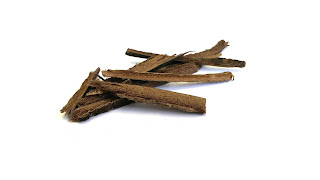Arjuna
 |
| arjuna-bark, cardiotonics |
Biological source -:
Arjuna is the dried bark of
terminalia Arjuna
Family -:
Combretaceae.
Geographical occurrence -:
The plant is a large deciduous tree,
reaching a height of 60 to 80 feet. It grows throughout India.
Collection -:
The bark is collected mostly from wild
trees by making suitable incisions and dried.
Characters -:
1. Arjuna bark occurs as flat or
curved pieces of various sizes.
2. The outer surface is ash coloured
and smooth the inner surface is reddish in colour and striated.
3. It breaks with a fibrous fracture.
4. No odour but taste is astringent.
Constituents -:
1. Tannins, mainly pyrocatechol
tannins.
2. Arjunetin, a glycoside which on
hydrolysis yields glucose and Arjunic acid.
3. Arjunollic acid, a trieterpene-saponin
(it is responsible for diuretic effect).
4. Large quantities of calcium salts
and traces of aluminium and magnesium salts.
Uses -:
1. As a cardiotonic. It has a beneficial effect
in ischemic heart diseases. 2. As a diuretic (this effect is caused by
saponin).
3. As an astringent and febrifuge,
Adulterant -:
The
dried bark of terminalia tomentosa is
sometimes used as an adulterant of arjuna bark.








0 comments:
Post a Comment